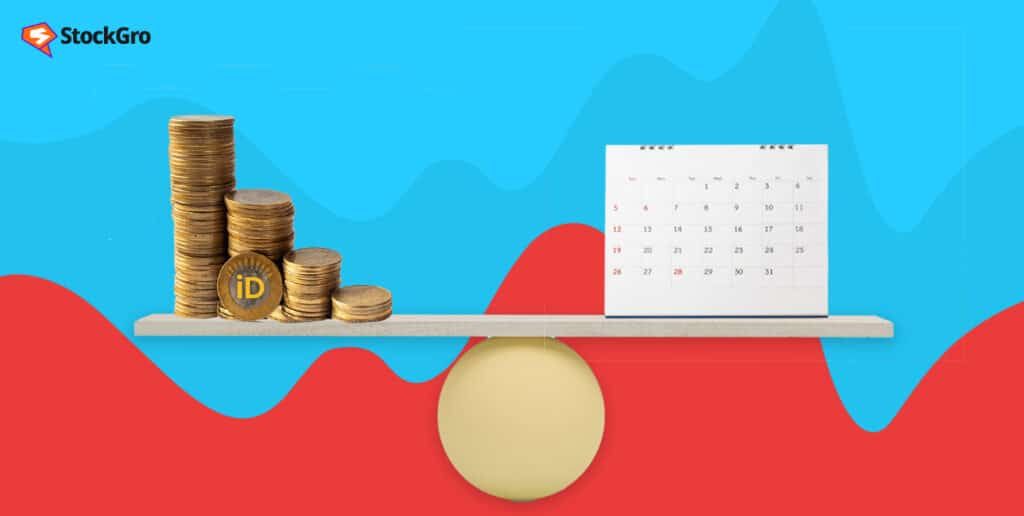
In the ever-evolving landscape of investments and financial planning, the term ‘dividend’ stands as a cornerstone concept that every investor encounters. Dividends are a crucial part of the financial market, often serving as a steady income source for shareholders.
While most people may be familiar with dividends paid out annually, the concept of ‘interim dividends’ might not ring a bell for everyone. Yet, it plays an instrumental role in enriching your investing experience and diversifying your portfolio.
This blog aims to demystify what an interim dividend is, why companies choose to distribute it, and how it can affect your overall investment strategy.
What is an interim dividend?
Before we delve into the specifics of an interim dividend, it’s important to grasp the concept of a dividend in general. A dividend is simply a sum of money a company pays its shareholders, typically from its profits. Now, an interim dividend is a specific type of dividend that comes before the company’s annual general meeting and the finalisation of its annual financial statements.
The primary market often buzzes with discussions about dividends, especially when large, established companies announce them. An interim dividend is like a “sneak peek” or “preview” of a company’s financial performance before the year ends.
You may also like: Deciphering the rising wedge pattern in stock trading
Interim dividend meaning explained
An interim dividend is a cash payment given to shareholders, often every quarter, although it could also be annual depending on the company’s financial calendar. These payments are usually smaller than the dividends declared at the end of the financial year, known as “final dividends.”
Companies with stable cash flows and strong financial health often distribute interim dividends to maintain shareholder interest and provide a steady income stream for investors. This makes such dividends an excellent indicator for assessing a company’s short-term financial health.
Also read: What does the Doji candle tell us about the market?
How to calculate an interim dividend
Calculating an interim dividend is easier than you think! The formula involves taking the company’s earnings, multiplying them by the dividend payout ratio, and then dividing by the number of outstanding shares. Here’s how it goes:
\(\text{Interim Dividend per Share = }\frac{\text{(Earnings of the company)} \times \text{(Dividend payout ratio)}}{\text{Number of shares}}\)Interim dividend example
For example, if a company decides to set a payout ratio of 30% and it has earnings of ₹35 crores, ₹10.5 crores would be earmarked for interim dividends. If the number of shares is 30 lakhs, each share would fetch a dividend of ₹35. This straightforward calculation helps investors know what to expect in dividend payouts, making it easier to plan their investment strategy.
Also read: The Capital Asset Pricing Model (CAPM)
Difference between interim dividend and final dividend
Understanding the difference between an interim and a final dividend is crucial for any investor. Below is a table to clarify some key distinctions.
| Features | Interim Dividend | Final Dividend |
| Timing | Declared before the financial year ends | Declared during the annual general meeting |
| Revocation | Can be revoked with shareholder consent | Cannot be revoked |
| Rate | Generally lower than the final dividend | Typically higher than the interim dividend |
| Authorization | Announced by the board of directors | Recommended at the annual general meeting |
| Special provisions in articles | Allowed if articles permit | No special provisions required |
Are Interim Dividends the Boost Your Portfolio Needs?
Released before the annual financial results and the annual general meeting, an interim dividend sets the tone for what’s to come. It’s like the opening act that warms up the crowd before the headline act arrives on stage, capturing attention and generating buzz.
Timing and purpose
Companies often release interim dividends quarterly, although this can vary. The timeline for these payouts is significant because it’s ahead of the company’s complete annual financial disclosure. The logic behind this move is layered.
On one hand, it serves to maintain investor interest throughout the year, offering regular rewards for holding onto a company’s shares. On the other, it serves as a signal—a pulse of sorts—that can provide insights into the company’s financial health. When a business consistently provides interim dividends, it’s a sign to the market that the company is confident about its financial stability, and this confidence can reverberate across the primary market.
Who benefits from interim dividends and why?
Shareholders are the direct beneficiaries of interim dividends. These dividends can be particularly attractive to those who are looking for a regular income from their investments, such as retirees.
Furthermore, interim dividends often appeal to long-term investors who value a consistent return over the thrill of short-term market gains. It offers a cushion of sorts, a tangible return that doesn’t require selling off any portion of the investment.
From the company’s standpoint, issuing interim dividends can be a strategic move. It fosters investor loyalty, thereby stabilizing the stocks price. It can also serve as a tool for projecting an image of financial robustness, thereby attracting further investments.
Who is eligible for an interim dividend?
Almost all shareholders are eligible to receive interim dividends. However, you must own shares before the “record date,” which is a specific date announced by the company. If you purchase shares after this date, you won’t be eligible for that period’s interim dividend.
What does an interim dividend indicate?
While an interim dividend often signals strong financial performance, it doesn’t necessarily mean the company is profitable. It’s essential to consider other financial indicators like revenue growth, net income, and cash flow to get a comprehensive understanding of the company’s financial health.
Why are interim dividends paid?
Companies pay interim dividends for various reasons. It can be to boost investor morale, indicate strong financial performance, or serve as a token of goodwill to the shareholders. It helps in sustaining investor interest and provides a regular income for those relying on dividend payments.
Interim dividends and financial statements
Financial statements serve as the report card for any publicly traded company. These reports often hold clues about whether a firm will issue an interim dividend. Factors like positive cash flow, growing net income, and low levels of debt could indicate the likelihood of an interim dividend. Seasoned investors often scrutinize interim financial reports to predict future interim dividend payouts, thereby gaining an edge in investment planning.
Conclusion
Understanding interim dividends can be an asset in your investment journey. These dividends provide not only a stable income but also offer insight into a company’s short-term financial health. While stock prices may swing wildly due to various factors, a consistent interim dividend payout is often a sign of stability and a commitment to shareholders.
As you wade through the various options in the primary and secondary markets, remember that dividends, especially interim ones, can be your north star, guiding you towards informed and lucrative investment decisions.

